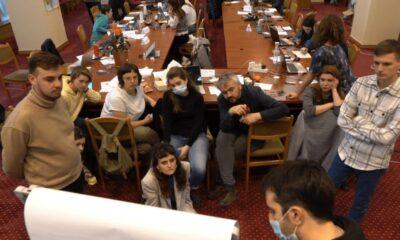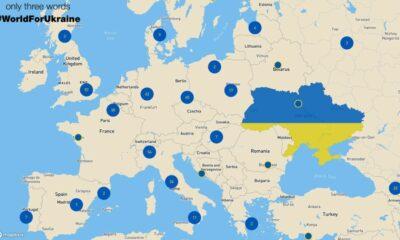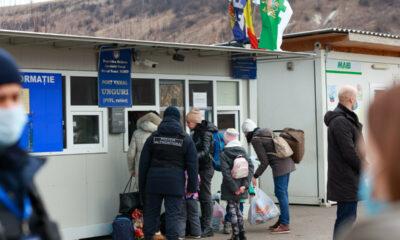Economy
Commentary: The rate, severity and depth of poverty increased in Moldova
Reading Time: 5 minutesThe rate, severity and depth of poverty increased in Moldova.
Experts Business Consulting Institute (BCI) finished “The Study concerning rural poverty in the Republic of Moldova in 2005”. According to the results of the research, in 2005, poverty rate increased in rural area by 4.8 percentage points comparing to the last year, reaching the level of 36%, a fact which mostly determined the growth of the rate on national dimension. Besides the growth of its rate, poverty became deeper and more severe.
A doubtful quality of social and economic policies
The GDP growth (7.1%) couldn’t entail the reduction of poverty in rural area at a desirable rate because the share of agriculture, which is the main activity in rural area, is of only 14% from the GDP. On the other hand, neither the GVA of just 1.8% for this sector could be sufficient for producing a reduction of poverty. This situation is also caused by the fact that inhabitants of villages, who mostly have incomes from individual farms, practice agriculture for subsistence and do not effectively participate in commercial exchanges. This is why, as BCI experts assert, economic growth in the actual structure of the economy cannot sufficiently contribute to the reduction of poverty rate in the rural area.
The growth of the income differences, most probably led to the increase of the consumption discrepancy, which on the other hand would worsen poverty evaluation indicators. Thus, in 2005, a real growth of consumption and income had been registered. But this happened not for poor people but for reach ones.
The greatest contribution to the growth of the poverty rate has been brought by households having their income especially from individual farming and social indemnities, including socio-occupational groups of farmers and employees in agriculture, as well as families having 3 or more children. Thus the poverty in villages can be associated with the agricultural activity and dependence on social indemnities, conclude the authors of the research.
In the examined period, in rural area, medium real income per person grew due to the increase of income from paid jobs and social subventions. In the same time the rate of poverty could grow because of reducing incomes from individual farming, in the cases of households having a greater share of income from this source. A significant diminution of income from land renting is obvious, representing another factor which could influence the increase of the poverty rate.
The occupation rate in urban area has higher (46.6%) in comparison to that in the rural one (44.5%). Thus, in 1999 agriculture covered 50% of the total employment relations, in 2005, though – only 40.7%. This structural modification is mostly determined by the work force migration processes from the rural area and not by the reallocation of the exceeding work force from agriculture to industry and services. All this factors lead to pressures over the Budget of state social insurances.
Villagers eat, heal and learn poorly
Poor’s structure of the consumption didn’t change very much, although, in general, there can be observed a certain difference between the consumption priorities adopted by the poor and the rest of the population. The greatest differences in this sense have been attested in the case of expenses for education, communal services, clothes and shoes. In the rural area – the poor have insignificantly reduced their consumption of alcoholic beverages, other categories have reduced their expenses for clothes and shoes and all the households considerably decreased expenses for education.
Of about MDL 11.5 bln transferred from abroad, only MDL 139 mln become part of the incomes of rural households. Having these conditions it cannot be asserted with enough exactness whether poor households benefit from these transfers or they are poor also because they don’t benefit from these transfers. From the available data it can be concluded that poor categories receive insignificant sums from remittances. Taking into consideration the huge sum of transfers it is thought that their importance in diminishing the poverty rate is considerable. At the same time it can be affirmed that a certain number of persons do not have access to remittances. Respectively, even if the sum of transferred money continues to grow, it will not directly contribute to their saving from poverty.
Schooling rates for poor families from the rural area are extremely low and continue to diminish year by year, with the exception of pre-school rate. An explication of this state of affaires can be found in the fact that in villages and small towns, individual households could not pay the expenses for clothes food, school supplies and textbooks. There are special motives for worrying, given the fact that an increasing number of school age children are left under the supervision of neighbours and relatives, because the parents have to work abroad. At the same time, children from villages enter the educational system a certain period later and leave it earlier. Already at the age of 13 the rates of schooling of these children begin to reduce in comparison with their fellows from the city area. This fact obviously influents the quality of knowledge and, as a consequence, the capacity of gaining incomes and building a career, based on the individual aspirations of each person.
Discriminated children and old people
In 2005, the average pension for age limit in agriculture was of 28% of the medium wage in the country and 56% from the existence minimum for pensioners, being smaller than pensions of other beneficiaries from the social insurance system. From the total of expenses for paying pensions in the system of insurances, 50% were expenses for paying pensions to farmers, while their contributions are of 5 %.
While, social insurance transfers form an important source of income for individual households, especially for those with aged people, other money transfers had an insignificant effect for the reduction of the poverty. The majority of the allocations are made on the basis of category principles and just a few are directioned on the basis of testing income.
The actual system of state social services continues to be poorly diversified. The institutionalization rate in 2005 represented a growth of 4% to the level of 2004, and of 12.9% to that of 2001. The necessity of the development of services with a communitarian emphasis alternative to the institutional ones is obvious.
Population from villages pays less attention to the importance of income or alimentation, but puts an emphasis on the state of health. This situation is determined by the fact that the obtainment of income is directly related to the person’s capacity to physical work. As a rule, categorizing persons as poor is not made on the basis of expenses or income but mostly on that of the capacity to obtain income. This is the cause why poor people are appreciated as persons who either cannot or do not want to work, being followed by families in which the consumption is disproportionably greater comparatively to the incomes because of the family structure (families with many children for example). The lack of financial resources contributed to the reduction of the number of attending doctors especially I poor households from the rural area. On the other hand the number of appeals for urgency medical services is increasing. An alarming number of families are considered poor on motives of alcoholism or laziness.
New policies are requested
Experts Business Consulting Institute consider that the increase of the poverty rate in villages can be explained by a range of causes. Among the most important ones are the diminution of income from the farming activity, the insignificant impact of governmental policies for creating work places in rural area, the inequitable repartition of the national product, limited access of the population to goods and services as well as the lack of some effective mechanisms of supporting poor people. At the same, there exist methodological problems for the objective evaluation of the poverty in rural area, problems related to the evaluation of the natural consumption, difference between regional prices. It is also a problem to include in the category of poor, of those who realized consumption expenses under the threshold of absolute poverty, but who declared incomes which include these persons in the group of persons richer from their income. // Info-Prim Neo
Economy
Moldova will receive a disbursement of 36 million euros as part of the the Economic Recovery Plan

This week, the European Commission approved the disbursement of 36 million euros in grant money for the Republic of Moldova. The announcement was made by Deputy Director-General for Neighbourhood Policy and Enlargement Negotiations at the European Commission, Katarina Mathernova, who paid an official visit to the Republic of Moldova between September 13-15, together with Managing Director for Russia, Eastern Partnership, Central Asia, Regional cooperation and OSCE, at the European External Action Service, Michael Siebert.
The EU officials had meetings with President Maia Sandu, Minister of Foreign Affairs and European Integration, Nicu Popescu, Speaker of Parliament, Igor Grosu, Prime Minister of the country, Natalia Gavrilita, as well as key representatives of Government, international financial institutions and the civil society, according to a press release issued by the Delegation of the European Union to the Republic of Moldova.
Beside such topics as the EU-Moldova relations and prospects, the priorities of the reform agenda of the new Moldovan Government, preparations for the Eastern Partnership Summit at the end of the year and the Transnistrian conflict settlement, the officials also discussed the EU assistance in support of reforms and the Economic Recovery Plan for Moldova, which was announced in June with a total EU support of 600 million euros over the next 3 years.
“The first measures under the Economic Recovery Plan will shortly materialize, with the expected disbursement of 36 million euros in grant money under budget support programmes to support the authorities’ efforts to fight against the consequences of the pandemic. Moldova can count on EU’s assistance on its path to reforms and to recovery, bringing tangible results to citizens,” Katarina Mathernova stated.
The plan is based on assistance provided by the European Union through various bilateral and regional instruments, aiming to mobilize the funds in the form of grants, loans, guarantees and macro-financial assistance.
“The Economic Recovery Plan for the Republic of Moldova involves much more, not just this financial support provided immediately. It must help digital transformation, strengthen infrastructure, energy efficiency, education and support small and medium-sized enterprises,” the EU official also said.
As Prime Minister Natalia Gavrilita informed, “The Economic Recovery Plan and the 5 flagship initiatives for Moldova in the Eastern Partnership will directly contribute to the reform and consolidation of institutions, stimulate long-term socio-economic development, bring direct benefits to citizens, and unleash new economic opportunities through promoting the green agenda and digitization. Small and medium-sized enterprises (SMEs) have been hit hard by the crisis. Promoting and diversifying access to finance and reducing collateral requirements will be essential in supporting economic operators. We are grateful to the EU partners who will launch two programs to support 50 000 independent Moldovan SMEs to adapt to the new conditions.”
President of the Republic of Moldova, Maia Sandu, welcomed the decision of the European Union to disburse about 745 million lei in grant money, as the official page of the President’s Office announced. “EU support comes after a long period of freezing of European assistance, caused by former governments. We managed to relaunch the political dialogue with the European Union and resume financial assistance. The Republic of Moldova is gradually regaining the trust of its strategic partners. This European support is also a signal of encouragement for the new Government team in its commitment to clean up the institutions, fight corruption and launch development programs in the country,” said Maia Sandu.
Photo: unknown
Economy
Romania and Moldova signed a partnership memorandum pledging to cooperate in promoting their wines
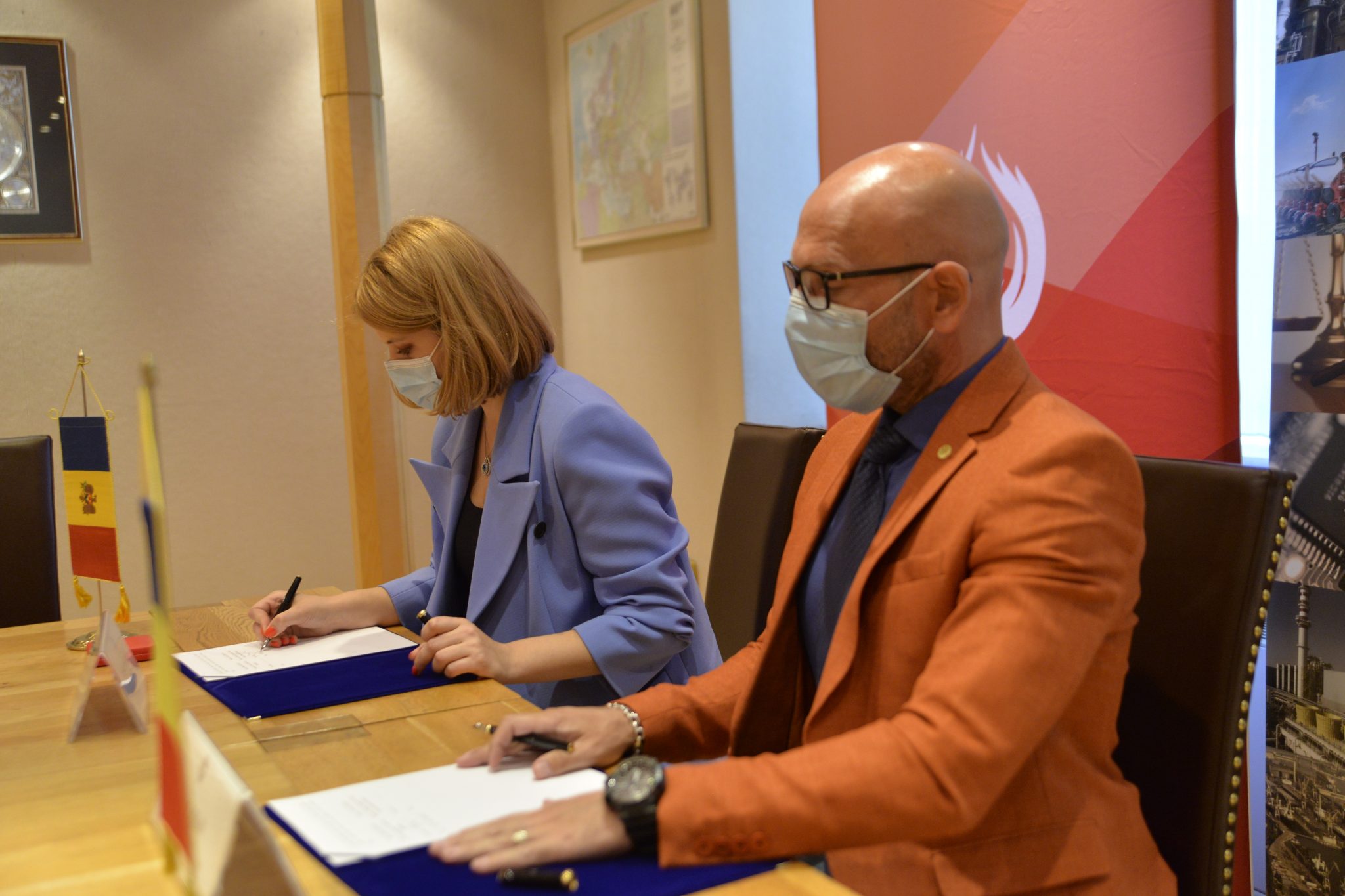
The Chamber of Commerce and Industry of Romania (CCIR) and the National Office for Vine and Wine (NOVW) of the Republic of Moldova signed, last week, a memorandum of cooperation on organizing joint promotional activities in the markets of common interest, as the CCIR announced.
China, Japan or the USA are just some of the markets targeted by the Romanian and Moldovan institutions. The memorandum also involves advertising activities for wines from common indigenous varieties, promoting the oeno-tourist region, developing a tourist route in the two states, exchange of experience, study visits, and mutual support in identifying new export opportunities. “We are very confident that this collaboration between our organizations will lead to sustainable economic growth and a higher degree of well-being among Moldovans and Romanians,” claimed Deputy Secretary-General of CCIR, Bogdan Visan.
On the other hand, Director of the NOVW, Cristina Frolov, declared that no open competition with Romania is aimed at the governmental level of the Republic of Moldova. “This request for collaboration is a consequence of the partnership principle. Romania imports 10-12% of the wine it consumes, and we want to take more from this import quota. Every year, the Romanian market grows by approximately 2.8%, as it happened in 2020, and we are interested in taking a maximum share of this percentage of imported wines without entering into direct competition with the Romanian producer,” the Moldovan official said. She also mentioned that Moldova aims at increasing the market share of wine production by at least 50% compared to 2020, and the number of producers present on the Romanian market – by at least 40%.
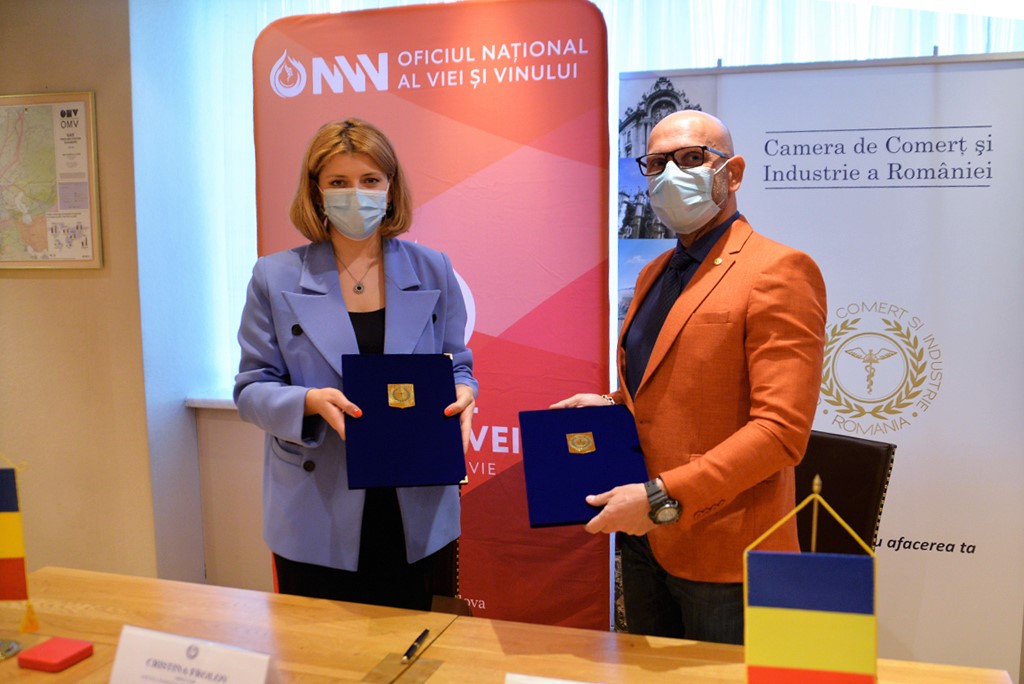
Source: ccir.ro
**
According to the data of the Romanian National Trade Register Office, the total value of Romania-Moldova trade was 1.7 billion euros at the end of last year and over 805 million euros at the end of May 2021. In July 2021, there were 6 522 companies from the Republic of Moldova in Romania, with a total capital value of 45.9 million euros.
The data of Moldova’s National Office of Vine and Wine showed that, in the first 7 months of 2021, the total quantity of bottled wine was about 27 million litres (registering an increase of 10% as compared to the same period last year), with a value of more than one billion lei, which is 32% more than the same period last year. Moldovan wines were awarded 956 medals at 32 international competitions in 2020.
Photo: ccir.ro
Economy
Moldova’s hope to be a top walnut exporter and its main difficulties

The Republic of Moldova has perfect weather conditions for growing walnut trees, that creating a great potential of walnut production and trade, especially on international markets, where the demand is way higher than the product’s supply. National and international experts believe that the country’s walnut production industry is on the verge of important transformations, which could lead to increased yields, quality and competitiveness worldwide.
According to authorities, Moldova exports 34-35 thousand tons of walnuts in shell, which is about 7% of the total export of fruit and 5% of the total export of horticultural products. The export value is assessed as being $120 million, that being 57-60% of the total fruit export value and about 50% of horticultural export value. Most of walnut crops are exported to the EU countries, such as France, Germany, the Netherlands, Romania and Austria. The country’s exports were among the world’s top 10 when it comes to the highest dollar value of the product during 2020.
Viorel Gherciu, Minister of Agriculture and Food Industry, pointed out that the production in the domestic walnut industry has increased by 55% in the last five years, which ranks Moldova among the main producers in the world.
“The biggest opportunity for this industry is that we are in the geographical proximity of the largest walnut import area in the world, which is the European Union, with almost 40% of total imports in the world. We are on the EU border, with privileged relations, with an Association Agreement. We already enjoy a good relationship in working with European importers, they trust our processors. A very close collaboration has been created and this is, in fact, the guarantee for those who invest in the area,” claimed the president of the Walnut Producers Association, Oleg Tirsina.
The data provided by the National Bureau of Statistics show that there are 34.7 thousand hectares of walnut plantations in the country. 20.90 hectares are represented by orchards. 75% of planted orchards are formed of old varieties trees. 30-35% of the exported production comes from orchards, the rest comes from individual farmers and plantations along the roads. This means that the quality of walnut production is not at its maximum potential. Developing commercial plantations through orchards modernization and extension of walnut varieties would provide double yield and better quality, experts say.
Governmental support in the form of subsidizing solutions, foreign investments and credit options are indispensable for the industry development. One of the financing options is the credit line of the European Investment Bank Project. Since 2016, 15 producers and processors of nuts, almonds and hazelnuts have benefited from these loans with the total amount of investments worth 8.7 million euros. A further extension of the project would provide another 60 million euros for the modernization of the horticultural sector in general and for harvesting organic walnuts in particular.
Photo: heymoldova.com


